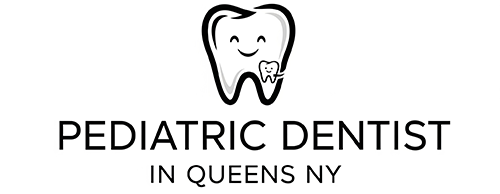Finding the right dental insurance in the USA can feel overwhelming, with countless plans offering varying coverage, premiums, and networks.
Whether you’re looking for individual coverage or a family plan, understanding your options is key to making an informed decision.
This guide breaks down the types of dental insurance, top providers, and tips for choosing the best plan for your needs.
Types of dental insurance plans
Dental insurance plans in the USA typically fall into three categories:
a. Dental health maintenance organization (DHMO)
DHMO plans require you to choose a primary dentist from a network of providers.
They offer low premiums and no deductibles but limit your choice of dentists.
Pros:
- Affordable premiums.
- No annual maximums.
- Predictable costs for basic services.
Cons:
- Limited provider network.
- Requires referrals for specialists.
Best for: Budget-conscious individuals who don’t mind network restrictions.
b. Preferred provider organization (PPO)
PPO plans offer more flexibility, allowing you to visit any dentist, though in-network providers cost less.
These plans typically have higher premiums and deductibles but provide greater freedom.
Pros:
- Access to a wide network of dentists.
- No referrals needed for specialists.
- Coverage for out-of-network care.
Cons:
- Higher premiums and deductibles.
- Annual maximums may limit coverage.
Best for: Those who want flexibility and are willing to pay higher costs.
c. Indemnity (fee-for-service) plans
Indemnity plans allow you to visit any dentist and reimburse a percentage of the cost.
These plans offer the most flexibility but often come with higher out-of-pocket expenses.
Pros:
- No network restrictions.
- Freedom to choose any dentist.
Cons:
- Higher premiums and out-of-pocket costs.
- Requires upfront payment and claims submission.
Best for: Individuals who prioritize choice over cost.
2. Key factors to consider when choosing dental insurance
When evaluating dental insurance plans, consider the following:
a. Coverage levels
Most plans categorize services into three tiers:
- Preventive care: Cleanings, exams, and X-rays (usually 100% covered).
- Basic procedures: Fillings, extractions, and root canals (typically 70–80% covered).
- Major procedures: Crowns, bridges, and dentures (often 50% covered).
Tip: Check if the plan covers orthodontics or cosmetic procedures if needed.
b. Annual maximums
The annual maximum is the most the plan will pay in a year. Most plans range from $1,000 to $2,000.
If you anticipate needing extensive dental work, look for a plan with a higher maximum or no cap.
c. Waiting periods
Some plans impose waiting periods (6–12 months) for major procedures.
If you need immediate care, look for plans with no or short waiting periods.
d. Premiums and deductibles
Compare monthly premiums and deductibles to find a plan that fits your budget.
Lower premiums often mean higher out-of-pocket costs and vice versa.
3. Top dental insurance providers in the USA (2025)
Here are some of the best dental insurance providers based on coverage, affordability, and customer satisfaction:
a. Delta Dental
- Pros: Largest network of dentists, no waiting periods for preventive care.
- Cons: Limited coverage for major procedures.
- Best for: Families and individuals seeking broad network access.
b. Cigna
- Pros: No waiting periods, competitive premiums.
- Cons: Lower annual maximums.
- Best for: Those needing immediate coverage.
c. Guardian Direct
- Pros: High annual maximums and orthodontic coverage.
- Cons: Higher premiums.
- Best for: Individuals needing orthodontic care.
d. Humana
- Pros: Affordable premiums, extensive network.
- Cons: Limited coverage for major procedures.
- Best for: Budget-conscious buyers.
e. MetLife
- Pros: Strong coverage for major procedures, no-network options.
- Cons: Higher deductibles.
- Best for: Those anticipating extensive dental work.
4. Discount dental plans: An alternative to insurance
If traditional insurance doesn’t fit your budget, consider discount dental plans.
These plans offer reduced rates on dental services for an annual fee but don’t provide insurance coverage.
Pros:
- No annual maximums or waiting periods.
- Affordable membership fees.
Cons:
- Not insurance (you pay out-of-pocket).
- Limited to participating dentists.
Best for: Those who don’t need frequent dental care.
5. How to choose the best dental insurance plan
Follow these steps to find the right plan:
- Assess your needs: Consider your dental health history and anticipated needs.
- Compare plans: Use comparison tools on sites like eHealth or DentalPlans.com.
- Check provider networks: Ensure your preferred dentist is in-network.
- Read reviews: Look for customer feedback on claims processing and customer service.
Final thoughts: Invest in your oral health
A good dental insurance plan can save you money and ensure access to quality care.
By understanding your options and evaluating your needs, you can choose a plan that provides the best value and peace of mind.

Dr. Mary G. Trice is a renowned pedodontist based in Queens, NY. With an unwavering dedication to children’s dental health. In addition to her clinical practice, Dr. Trice is the writer and manager behind the informative platform pediatricdentistinqueensny.com. Through this site, she offers valuable insights, tips, and resources for parents and guardians, aiming to bridge the gap between professional dental care and everyday oral hygiene practices at home.
